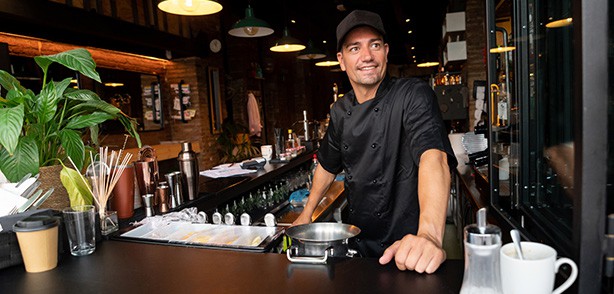5 Reasons New Restaurants Fail (And How to Avoid the Same Fate)

In 2017, more than 10,000 restaurants closed, leaving these small business owners with disappointment and uncertainty about the future . While it’s unclear how many restaurants fail in the first year (outlets have reports varying from 17 to 90 percent), the reality is that many new businesses fail. Due to this, small business owners must work hard to keep their doors open.
In this post, we’ll discuss five reasons why new restaurants fail and what you can do to ensure that your establishment stays open for years to come.
Here’s Why There's a High Failure Rate for Restaurants:
1. Poor Customer Service
Research has found that seven out of 10 consumers will spend more money with businesses that deliver excellent customer service. On the contrary, 33 percent of Americans say they’ll consider switching companies after just one bad service experience. Therefore, even if your food is fantastic, it’ll be hard to attract customers if you don’t provide great service.
How to Combat This: Ensure your entire staff understands how to delight your customers and deliver a memorable experience. Every person your customers encounter should be friendly and attentive, and all problems should be addressed immediately. By making this commitment to service, you can avoid getting a bad reputation for not valuing your patrons.
2. Lack of Marketing
There are more than 660,000 restaurants in the U.S. and the competition is fiercer than ever. Consumers have many options and must be persuaded to dine at your establishment. By not marketing your restaurant, you may lose out to restaurants that are constantly running eye-catching advertisements. Not to mention, no one will know your new restaurants exists unless you promote it.
How to Combat This: Develop a thorough marketing plan that includes a robust social media presence. People eat with their eyes first, and Instagram is the perfect medium to showcase your food.
You should also have a website that includes your menu, in addition to advertising locally. For example, offer local food bloggers a free meal in exchange for a review on their site. Or, you can advertise coupons in a local dining guide.
Once you've compiled a strong marketing plan, you can hope that patrons will start spreading the word to their friends and family. Word of mouth marketing can really benefit your business, so be sure to create a strong rapport with patrons!
3. The Food Isn’t Good
Although this may sound shocking, many restaurant owners don’t realize that their food tastes terrible. On the Food Network show Restaurant Impossible, chef Robert Irvine transforms failing restaurants and points out when the food isn't tasty. If you want to keep customers coming back, your food must be consistently excellent.
How to Combat This: Before finalizing your menu, ask a group of locals or restaurant industry professionals to test the food and give you their honest opinions. Even if you love your veggie burger, if 60 percent of your testers hate it, you should leave it off the menu.
In addition, should regularly taste your food to ensure your chefs are cooking food properly. If you don't like the food, chances are your patrons won't either. We also suggest handing out surveys to get your customer’s honest opinions about your food.
4. You Don’t Pay Attention to Online Reviews
According to Modern Restaurant Management, for every online star a restaurant gets, they can increase revenue by 5 to 9 percent. Positive online reviews help gain consumer trust, while negative reviews can massively hurt your business. In fact, 22 percent of consumers won’t give you their business after reading just one negative review.
How to Combat This: First, ensure you provide excellent customer service and great-tasting food to gain positive reviews. Once you've mastered that, understand that you can’t please everybody. When you receive negative reviews, conduct research, correct the issue (if there was one), and respond in a timely manner.
5. Insufficient Accounting Systems and Cash Flow
The high restaurant failure rate can often be attributed to owners not understanding the importance of basic accounting principles, including cash flow. In fact, over 80 percent of businesses fail because of poor cash flow management. You must keep an eye on your cash flow, so you have enough money to pay your staff, afford food costs, and pay for utilities. In addition, you must properly price your food so that your business turns a profit.
How to Combat This: If accounting and business forecasting isn’t your strong suit, hire an accountant or outside business consultant. They should be able to manage your cash flow, profit and loss, and staffing needs.
In Conclusion: Proper Management is the Key to Success
Even restaurant businesses with tasty dishes won’t survive if they’re managed poorly. Restaurants have many moving parts, and managers must possess the ability to oversee multiple employees, order the right amount of food, and maintain a positive reputation both online and offline.
Hiring the right restaurant manager is one of the most important decisions you’ll make for your business. This person should help you grow your business, and have a broad understanding of marketing, budget, and other necessary tasks.
Hopefully, now that you're aware of the five common mistakes that hurt new restaurants, you can open a restaurant that becomes a longstanding success!
Editor’s Note: This post was updated for accuracy and comprehensiveness in July 2019.